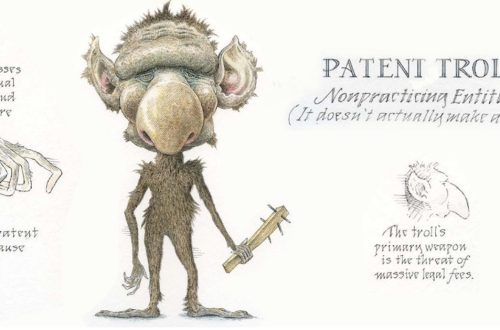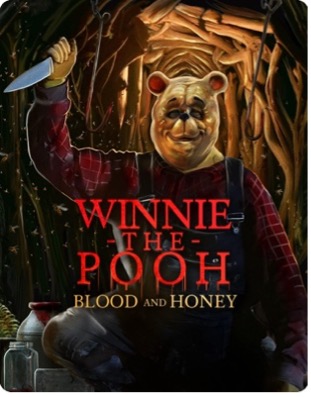By: Pedro Angel
A federal district court’s recent decision to deny Penn State University’s motion to dismiss Vintage Brand’s counterclaims may have major implications on the sports merchandising market. Penn State sued Vintage Brand, an online retailer specializing in sports apparel and goods brandishing teams’ retro logos, for trademark infringement.[1] Vintage Brands countersued, claiming that the trademarks should be cancelled.[2]
Judge Matthew W. Brann’s decision to deny the recent motion revolves mainly on precedent holding that the turning point of the case is whether the consumer associates the product in contention with the trademark holder directly, not whether the consumer associates the trademarked logo itself with the trademark holder.[3] Judge Brann noted that this determination is a “fact-intensive inquiry” that would be better made through a trial and a jury and accordingly denied the motion. [4]
Three of the school’s registered trademarks are in contention. The three trademarks consist of: a 1984 registered trademark of the text “Penn State,” a 2017 registered trademark of the “Pozniak Lion” used as the school’s logo up until 1987, and a 2017 registered trademark of the Penn State school seal.[5] Vintage Brand’s defense is not that the logos they used were not trademarked, but rather, that the trademarks are invalid.[6]
The controlling law in this case is the Trademark Act of 1946, also known as the Lanham Act, which states a trademark can be obtained for “any word, name, symbol, or device . . . used by a person . . . to identify and distinguish his or her goods.”[7] If a trademark fails to distinguish a good, the whole trademark can be subject to cancellation.[8]
In this case, Vintage Brand, having survived a motion to dismiss, hopes to show that Penn State’s trademarks fall short to an ornamentality challenge.[9] Under the challenge, a registration fails if the overall commercial impression is (1) “solely as attractive ornamentation” and (2) not “also as a symbol that identifies and distinguishes a single source.”[10] One consideration that courts take into account is the symbol’s size and location.[11] Symbols that are small and placed on tags or other distinguishable places are more purposeful and as a result, non-ornamental, while larger, flashier, and predominantly featured logos or images tend to be more ornamental.[12]
Vintage Brands claims that they only used the logos as “mere decoration, printed in large font and in a prominent location.”[13] More specifically, they claim that because the logos do not function as a way to differentiate a product to a consumer as one with the rights and profits going to Penn State, the trademark is invalid, and therefore they can use the logos as a decoration on their shirt.[14] Penn State, on the other hand, contends that “it would be unimaginable that using PENN STATE, the University, or the Pozniak Lion Logo on a good . . . could be perceived by the consuming public as anything other than an identification of Penn State as the source or second source of the good.”[15] Therefore, according to Penn State, when a consumer buys a product from Vintage Brand, they are not only supporting the school’s sports team but also buying an officially licensed product directly from a school or school-sponsored source.
A logo can be ornamental but still fail to distinguish a product as pertaining solely to the trademark holder.[16] As a result, the court holds that the key test is whether the words or images work to distinguish the good.[17] This distinction is important to the greater purpose of trademark law, which is to promote competitive markets.[18] By preventing others from using protected logos that differentiate a product as belonging to the trademark holder, the holder can ensure they alone control the quality of the brand and product that is produced.[19]
However, in this case, the court recognizes that cutting off competition entirely by preventing the use of things such as school logos could adversely affect the quality, price, and variety of choice of goods.[20] In trying to find the balance in protecting trademarks without eliminating competition, Judge Brann has opened the door to allow third-party retailers to use university logos at their own discretion under the protection of the ornamentality challenge.
If Vintage Brands is successful, the court’s decision could have the positive impact of providing healthy competition for retailers as a whole, requiring them to step up the quality of their products, lower prices, or provide the consumer with more variety to choose from. Alternatively, it could also have the adverse effects of limiting the power of a license, which is the foundation of the current sports merchandising field, and potentially flooding the market with poor quality goods at the expense of the university. Either way, sports teams with stakes in merchandising in the amateur and professional fields will be keeping a close eye on the results of the Penn State case going forward.
[1] Pa. State Univ. v. Vintage Brand, LLC, No. 4:21-CV-01091, 2022 U.S. Dist. LEXIS 125170, at *1 (M.D. Pa. July 14, 2022).
[2] Id. at *1-2.
[3] Id. at *15-17.
[4] Id.
[5] Id. at *2-3.
[6] Id. at *3.
[7] Id. at. *4 (citing Lanham Act, 15 USCA § 1127).
[8] Id. at *4-.
[9] Id. at *4-5.
[10] Id. at. *5.
[11] Id.
[12] Id.
[13] Id. at *3.
[14] Id.
[15] Id. at *6.
[16] Id. at *5-6.
[17] Id.
[18] Id. at *7; See Kyle Jahner, Penn State Case Tests Sports Merchandising’s Legal Foundation, Bloomberg L. (July 20, 2022,2:15 AM), https://news.bloomberglaw.com/ip-law/penn-state-case-tests-sports-merchandisings-legal-foundation [https://perma.cc/A28R-SFK5].
[19] Vintage Brand, 2022 U.S. Dist. LEXIS 125170, at *7.
[20] Id. at *19.



